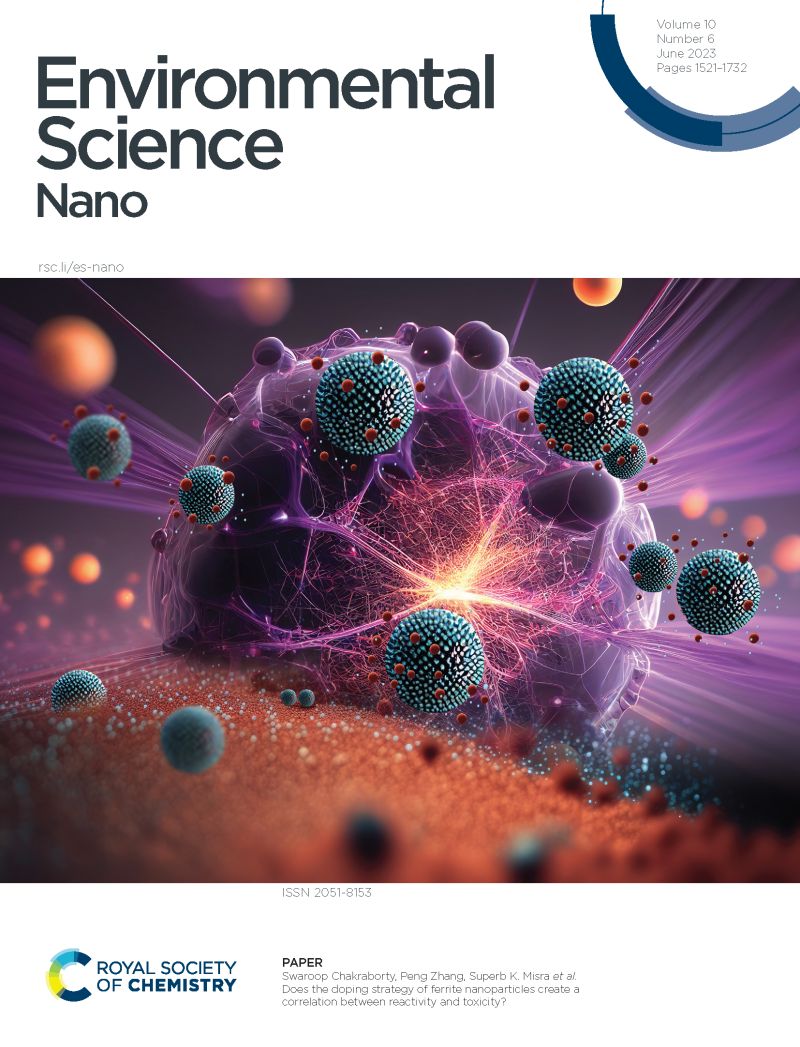Towards the Next Decade for Research on the Environmental Impact of Nanoscale Zerovalent Iron on Microorganisms
IF 5.8
2区 环境科学与生态学
Q1 CHEMISTRY, MULTIDISCIPLINARY
引用次数: 0
Abstract
Nanoscale zerovalent iron (NZVI) is among the most widely used nanomaterials in environmental applications. With such an increased use of NZVI, there is a need to understand its potential impact on microorganisms, vital components of various ecosystems. Significant progress has been made in elucidating the molecular mechanisms underlying NZVI toxicity in model bacteria, while recent research has shifted toward evaluating its long-term impacts on environmental microbial systems. Herein, we first revisit a range of studies on NZVI-single microorganism interactions under aerobic and anaerobic conditions in an effort to make general conclusions regarding NZVI toxicity mechanism at the cellular level. Additionally, a comprehensive overview is provided on the effects of NZVI on complex bacterial consortia in natural aquatic and soil environments, as well as in wastewater treatment systems. Finally, we discuss future research directions for sustainable and environmentally friendly application of NZVI.纳米级零价铁对微生物环境影响研究的未来十年
纳米零价铁(NZVI)是环境应用中应用最广泛的纳米材料之一。随着NZVI使用量的增加,有必要了解它对微生物的潜在影响,微生物是各种生态系统的重要组成部分。在阐明NZVI对模型细菌毒性的分子机制方面取得了重大进展,而最近的研究已转向评估其对环境微生物系统的长期影响。在此,我们首先回顾了一系列关于NZVI-单微生物在好氧和厌氧条件下相互作用的研究,试图在细胞水平上得出关于NZVI毒性机制的一般性结论。此外,还全面概述了NZVI对天然水生和土壤环境以及废水处理系统中复杂细菌联合体的影响。最后,对NZVI可持续和环境友好应用的未来研究方向进行了展望。
本文章由计算机程序翻译,如有差异,请以英文原文为准。
求助全文
约1分钟内获得全文
求助全文
来源期刊

Environmental Science: Nano
CHEMISTRY, MULTIDISCIPLINARY-ENVIRONMENTAL SCIENCES
CiteScore
12.20
自引率
5.50%
发文量
290
审稿时长
2.1 months
期刊介绍:
Environmental Science: Nano serves as a comprehensive and high-impact peer-reviewed source of information on the design and demonstration of engineered nanomaterials for environment-based applications. It also covers the interactions between engineered, natural, and incidental nanomaterials with biological and environmental systems. This scope includes, but is not limited to, the following topic areas:
Novel nanomaterial-based applications for water, air, soil, food, and energy sustainability
Nanomaterial interactions with biological systems and nanotoxicology
Environmental fate, reactivity, and transformations of nanoscale materials
Nanoscale processes in the environment
Sustainable nanotechnology including rational nanomaterial design, life cycle assessment, risk/benefit analysis
 求助内容:
求助内容: 应助结果提醒方式:
应助结果提醒方式:


